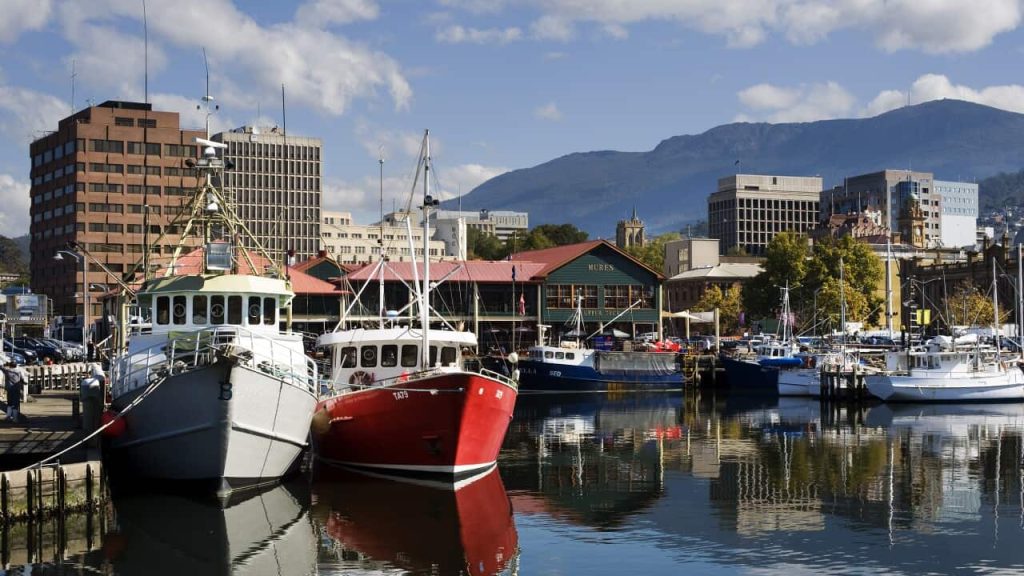The State of Air Quality in Australia and Around the World
Australia’s Air Quality Rankings
It could be a time for a breath of fresh air, with a new report finding three Australian cities have some of the cleanest air in the world — but one is lagging dangerously behind. The report from a vehicle trading site, Auto Trader, analyzed air pollution data from almost 400 cities worldwide. Hobart, Darwin, and Canberra topped the list, while Sydney, one of Australia’s most populous cities, has come in the 150th spot, posing questions about the impacts of air pollution.
Despite being the world’s fourth smallest country, Funafuti in Tuvalu has been ranked the city with the lowest air pollution.
The Cities with the Cleanest Air
According to the report, the tiny yet mighty city of Hobart in Tasmania came in first in Australia and third place globally with an air quality index of 1. It was just beaten out by the island of Funafuti in Tuvalu, located west-central in the Pacific Ocean. In second place was Manaus in Brazil, located in the heart of the Amazon rainforest. Hobart came in third place, followed by the Northern Territory’s capital of Darwin. Rounding out the rest of the top ten were several Pacific cities, including Apia in Samoa, Nukuʻalofa in Tonga, Wellington in New Zealand, and Australia’s capital city, Canberra, which came in tenth place.
According to the report, there were some Australian cities that didn’t fare as well. Adelaide came in at the 24th spot globally, Gold Coast at 29th, and Melbourne trailed behind, coming in the 52nd position. Perth and Brisbane also lagged behind, taking out the 95th and 96th positions. Coming in the last spot was Australia’s most populous city, Sydney.
The Cities with the Worst Air Pollution
The cities with the worst air pollution, ranked in the bottom 10, were mostly cities in Asia. These included Seoul in South Korea, Islamabad in Pakistan, Manama in Bahrain, Guangzhou and Tianjin in China, Santiago in Chile, Hanoi in Vietnam, Lahore in Pakistan, and New Delhi and Kolkata in India. In last place was Shanghai in China, with an air quality index score of 4.92. Low to middle-income countries were often of the most concern when it comes to air pollution.
Australia’s Big Issues with Air Quality
While the report might be best taken with a grain of salt, Australians should still be thinking about air quality. The Department of Climate Change, Energy, the Environment, and Water says climate change is affecting Australia’s air quality, especially because of bushfires. Bushfires can expose us to dangerous levels of smoke, which might have a short-term impact on the air we breathe.
Conclusion
Air quality is a crucial aspect of public health and environmental wellbeing. While some Australian cities boast clean air, others are struggling with pollution levels. It is important for policymakers and individuals to address these issues to ensure a healthy future for all.
FAQs
1. What are the cities with the cleanest air in Australia?
The cities with the cleanest air in Australia are Hobart, Darwin, and Canberra, according to the report.
2. Which Australian city has the worst air quality?
Sydney has been ranked as the Australian city with the worst air quality, coming in at the 150th spot globally.
The Impact of Air Pollution on Public Health
Introduction
Air pollution is a pressing issue that affects millions of people worldwide. As the climate warms and populations grow, the risk of air pollution-related health problems continues to rise. In this article, we will explore the various factors contributing to air pollution and its detrimental effects on public health.
Causes of Air Pollution
There are several factors that contribute to air pollution, including:
– Warming climate leading to increased smog in the summer
– Droughts causing dust storms
– Population growth resulting in higher pollution from fossil fuels and increased car usage
– Industrial activities leading to local air pollution build-up
– Wood heater smoke contributing to air pollution during the winter
Gavin Pereira, an environmental epidemiologist at Curtin University, emphasizes that Australia does indeed have air pollution problems, contrary to popular belief.
The Effects of Air Pollution
Air pollution can have a wide range of adverse effects on human health, including:
– Increased risk of respiratory illnesses
– Higher rates of cardiovascular and cerebrovascular mortality and morbidity
– Penetration of pollutants into the bloodstream, affecting multiple organs
– Diseases such as stroke, heart disease, lung cancer, COPD, pneumonia, and asthma
– Adverse birth outcomes, including preterm birth
According to the World Health Organization, air pollution was responsible for 8.1 million deaths globally in 2021, making it the second leading risk factor for mortality.
Who is Most Vulnerable?
While almost the entire global population is exposed to high levels of pollutants exceeding WHO guidelines, certain groups are at a higher risk, including:
– Residents of low and middle-income countries
– Children and the elderly
– People with disabilities
– Individuals exposed to air pollution in occupational settings
Pereira stresses that those who cannot easily minimize their exposure to air pollution are at a heightened risk of developing adverse health outcomes.
Conclusion
Air pollution poses a significant threat to public health, with millions of people worldwide suffering its consequences. It is crucial for governments, industries, and individuals to take proactive measures to reduce air pollution and safeguard the health of current and future generations.
FAQs
What are the main sources of air pollution?
Some of the primary sources of air pollution include vehicle emissions, industrial activities, agricultural practices, and residential heating.
How can individuals protect themselves from air pollution?
Individuals can reduce their exposure to air pollution by avoiding outdoor activities on high pollution days, using air purifiers at home, and using public transportation or carpooling to reduce emissions.

